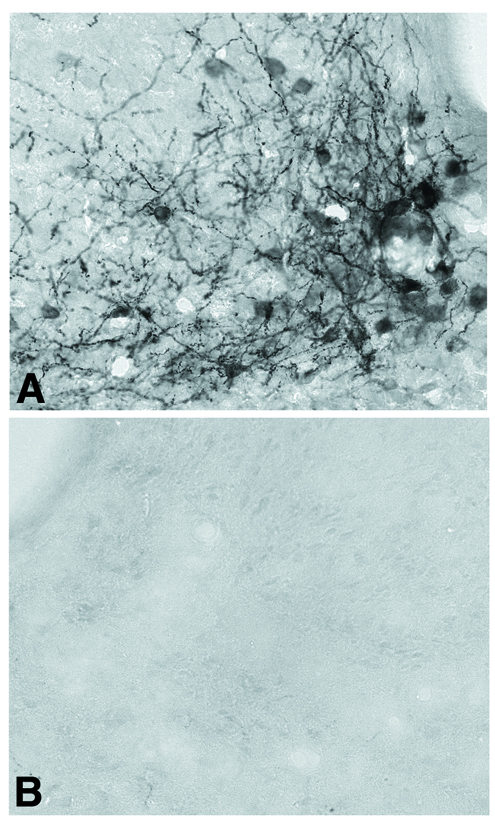When as little as five micrograms of Neuropeptide Y (NPY) are infused into the third ventricle of a rat, that rat will eat five times more than a normal amount of food over the subsequent two hours. An effective technique to confirm that leptin specifically acts upon NPY-containing neurons to depress feeding is to infuse the hypothalamus with a NPY linked to saporin. Rats treated with NPY-SAP become completely insensitive to the feeding-restraining effects of leptin because they lack NPY receptor-containing neurons in the arcuate nucleus. Results indicate that NPY-SAP binds to and has a higher binding affinity than NPY for the NPY receptor (Figure).1,2

(A) effects of Blank-SAP (Cat. #IT-21) control and
(B) NPY-SAP (Cat. #IT-28) injections into the arcuate nucleus on NPY-Y1 receptor immunoreactivity.1
- Bugarith K, Dinh TT, Li AJ, Speth RC, Ritter S. (2005) Endocrinology 146:1179-1191.
- Young JK (2016) Hunger, Thirst, Sex, and Sleep: How the Brain Controls Our Passions. Rowman & Littlefield Publishers. ISBN 14221824X.
